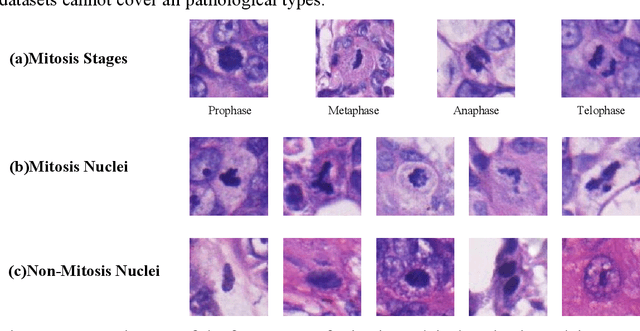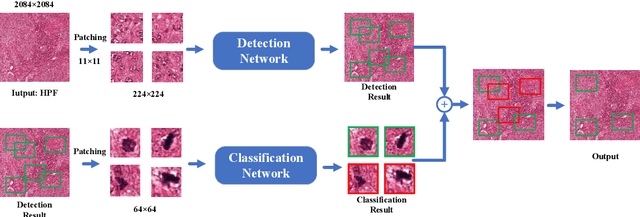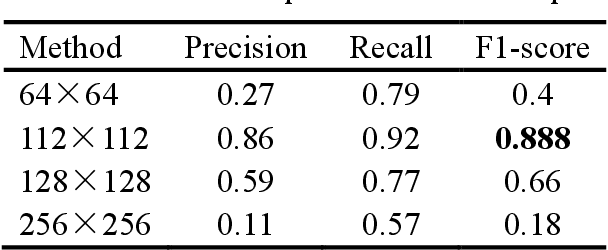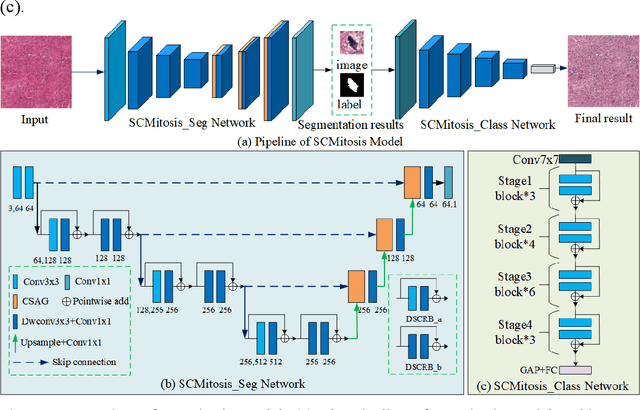Bingbing Li
Open World Object Detection: A Survey
Oct 15, 2024



Abstract:Exploring new knowledge is a fundamental human ability that can be mirrored in the development of deep neural networks, especially in the field of object detection. Open world object detection (OWOD) is an emerging area of research that adapts this principle to explore new knowledge. It focuses on recognizing and learning from objects absent from initial training sets, thereby incrementally expanding its knowledge base when new class labels are introduced. This survey paper offers a thorough review of the OWOD domain, covering essential aspects, including problem definitions, benchmark datasets, source codes, evaluation metrics, and a comparative study of existing methods. Additionally, we investigate related areas like open set recognition (OSR) and incremental learning (IL), underlining their relevance to OWOD. Finally, the paper concludes by addressing the limitations and challenges faced by current OWOD algorithms and proposes directions for future research. To our knowledge, this is the first comprehensive survey of the emerging OWOD field with over one hundred references, marking a significant step forward for object detection technology. A comprehensive source code and benchmarks are archived and concluded at https://github.com/ArminLee/OWOD Review.
MultiFuser: Multimodal Fusion Transformer for Enhanced Driver Action Recognition
Aug 03, 2024Abstract:Driver action recognition, aiming to accurately identify drivers' behaviours, is crucial for enhancing driver-vehicle interactions and ensuring driving safety. Unlike general action recognition, drivers' environments are often challenging, being gloomy and dark, and with the development of sensors, various cameras such as IR and depth cameras have emerged for analyzing drivers' behaviors. Therefore, in this paper, we propose a novel multimodal fusion transformer, named MultiFuser, which identifies cross-modal interrelations and interactions among multimodal car cabin videos and adaptively integrates different modalities for improved representations. Specifically, MultiFuser comprises layers of Bi-decomposed Modules to model spatiotemporal features, with a modality synthesizer for multimodal features integration. Each Bi-decomposed Module includes a Modal Expertise ViT block for extracting modality-specific features and a Patch-wise Adaptive Fusion block for efficient cross-modal fusion. Extensive experiments are conducted on Drive&Act dataset and the results demonstrate the efficacy of our proposed approach.
Data-driven modeling and supervisory control system optimization for plug-in hybrid electric vehicles
Jun 13, 2024Abstract:Learning-based intelligent energy management systems for plug-in hybrid electric vehicles (PHEVs) are crucial for achieving efficient energy utilization. However, their application faces system reliability challenges in the real world, which prevents widespread acceptance by original equipment manufacturers (OEMs). This paper begins by establishing a PHEV model based on physical and data-driven models, focusing on the high-fidelity training environment. It then proposes a real-vehicle application-oriented control framework, combining horizon-extended reinforcement learning (RL)-based energy management with the equivalent consumption minimization strategy (ECMS) to enhance practical applicability, and improves the flawed method of equivalent factor evaluation based on instantaneous driving cycle and powertrain states found in existing research. Finally, comprehensive simulation and hardware-in-the-loop validation are carried out which demonstrates the advantages of the proposed control framework in fuel economy over adaptive-ECMS and rule-based strategies. Compared to conventional RL architectures that directly control powertrain components, the proposed control method not only achieves similar optimality but also significantly enhances the disturbance resistance of the energy management system, providing an effective control framework for RL-based energy management strategies aimed at real-vehicle applications by OEMs.
Gland segmentation via dual encoders and boundary-enhanced attention
Jan 29, 2024



Abstract:Accurate and automated gland segmentation on pathological images can assist pathologists in diagnosing the malignancy of colorectal adenocarcinoma. However, due to various gland shapes, severe deformation of malignant glands, and overlapping adhesions between glands. Gland segmentation has always been very challenging. To address these problems, we propose a DEA model. This model consists of two branches: the backbone encoding and decoding network and the local semantic extraction network. The backbone encoding and decoding network extracts advanced Semantic features, uses the proposed feature decoder to restore feature space information, and then enhances the boundary features of the gland through boundary enhancement attention. The local semantic extraction network uses the pre-trained DeepLabv3+ as a Local semantic-guided encoder to realize the extraction of edge features. Experimental results on two public datasets, GlaS and CRAG, confirm that the performance of our method is better than other gland segmentation methods.
Multi-modality action recognition based on dual feature shift in vehicle cabin monitoring
Jan 26, 2024Abstract:Driver Action Recognition (DAR) is crucial in vehicle cabin monitoring systems. In real-world applications, it is common for vehicle cabins to be equipped with cameras featuring different modalities. However, multi-modality fusion strategies for the DAR task within car cabins have rarely been studied. In this paper, we propose a novel yet efficient multi-modality driver action recognition method based on dual feature shift, named DFS. DFS first integrates complementary features across modalities by performing modality feature interaction. Meanwhile, DFS achieves the neighbour feature propagation within single modalities, by feature shifting among temporal frames. To learn common patterns and improve model efficiency, DFS shares feature extracting stages among multiple modalities. Extensive experiments have been carried out to verify the effectiveness of the proposed DFS model on the Drive\&Act dataset. The results demonstrate that DFS achieves good performance and improves the efficiency of multi-modality driver action recognition.
Zero-Space Cost Fault Tolerance for Transformer-based Language Models on ReRAM
Jan 22, 2024Abstract:Resistive Random Access Memory (ReRAM) has emerged as a promising platform for deep neural networks (DNNs) due to its support for parallel in-situ matrix-vector multiplication. However, hardware failures, such as stuck-at-fault defects, can result in significant prediction errors during model inference. While additional crossbars can be used to address these failures, they come with storage overhead and are not efficient in terms of space, energy, and cost. In this paper, we propose a fault protection mechanism that incurs zero space cost. Our approach includes: 1) differentiable structure pruning of rows and columns to reduce model redundancy, 2) weight duplication and voting for robust output, and 3) embedding duplicated most significant bits (MSBs) into the model weight. We evaluate our method on nine tasks of the GLUE benchmark with the BERT model, and experimental results prove its effectiveness.
Rethinking Mitosis Detection: Towards Diverse Data and Feature Representation
Jul 12, 2023Abstract:Mitosis detection is one of the fundamental tasks in computational pathology, which is extremely challenging due to the heterogeneity of mitotic cell. Most of the current studies solve the heterogeneity in the technical aspect by increasing the model complexity. However, lacking consideration of the biological knowledge and the complex model design may lead to the overfitting problem while limited the generalizability of the detection model. In this paper, we systematically study the morphological appearances in different mitotic phases as well as the ambiguous non-mitotic cells and identify that balancing the data and feature diversity can achieve better generalizability. Based on this observation, we propose a novel generalizable framework (MitDet) for mitosis detection. The data diversity is considered by the proposed diversity-guided sample balancing (DGSB). And the feature diversity is preserved by inter- and intra- class feature diversity-preserved module (InCDP). Stain enhancement (SE) module is introduced to enhance the domain-relevant diversity of both data and features simultaneously. Extensive experiments have demonstrated that our proposed model outperforms all the SOTA approaches in several popular mitosis detection datasets in both internal and external test sets using minimal annotation efforts with point annotations only. Comprehensive ablation studies have also proven the effectiveness of the rethinking of data and feature diversity balancing. By analyzing the results quantitatively and qualitatively, we believe that our proposed model not only achieves SOTA performance but also might inspire the future studies in new perspectives. Source code is at https://github.com/Onehour0108/MitDet.
CGCE: A Chinese Generative Chat Evaluation Benchmark for General and Financial Domains
May 23, 2023Abstract:Generative chat models, such as ChatGPT and GPT-4, have revolutionized natural language generation (NLG) by incorporating instructions and human feedback to achieve significant performance improvements. However, the lack of standardized evaluation benchmarks for chat models, particularly for Chinese and domain-specific models, hinders their assessment and progress. To address this gap, we introduce the Chinese Generative Chat Evaluation (CGCE) benchmark, focusing on general and financial domains. The CGCE benchmark encompasses diverse tasks, including 200 questions in the general domain and 150 specific professional questions in the financial domain. Manual scoring evaluates factors such as accuracy, coherence, expression clarity, and completeness. The CGCE benchmark provides researchers with a standardized framework to assess and compare Chinese generative chat models, fostering advancements in NLG research.
A novel dataset and a two-stage mitosis nuclei detection method based on hybrid anchor branch
Jan 18, 2023



Abstract:Mitosis detection is one of the challenging problems in computational pathology, and mitotic count is an important index of cancer grading for pathologists. However, current counts of mitotic nuclei rely on pathologists looking microscopically at the number of mitotic nuclei in hot spots, which is subjective and time-consuming. In this paper, we propose a two-stage cascaded network, named FoCasNet, for mitosis detection. In the first stage, a detection network named M_det is proposed to detect as many mitoses as possible. In the second stage, a classification network M_class is proposed to refine the results of the first stage. In addition, the attention mechanism, normalization method, and hybrid anchor branch classification subnet are introduced to improve the overall detection performance. Our method achieves the current highest F1-score of 0.888 on the public dataset ICPR 2012. We also evaluated our method on the GZMH dataset released by our research team for the first time and reached the highest F1-score of 0.563, which is also better than multiple classic detection networks widely used at present. It confirmed the effectiveness and generalization of our method. The code will be available at: https://github.com/antifen/mitosis-nuclei-detection.
A Novel Dataset and a Deep Learning Method for Mitosis Nuclei Segmentation and Classification
Dec 27, 2022



Abstract:Mitosis nuclei count is one of the important indicators for the pathological diagnosis of breast cancer. The manual annotation needs experienced pathologists, which is very time-consuming and inefficient. With the development of deep learning methods, some models with good performance have emerged, but the generalization ability should be further strengthened. In this paper, we propose a two-stage mitosis segmentation and classification method, named SCMitosis. Firstly, the segmentation performance with a high recall rate is achieved by the proposed depthwise separable convolution residual block and channel-spatial attention gate. Then, a classification network is cascaded to further improve the detection performance of mitosis nuclei. The proposed model is verified on the ICPR 2012 dataset, and the highest F-score value of 0.8687 is obtained compared with the current state-of-the-art algorithms. In addition, the model also achieves good performance on GZMH dataset, which is prepared by our group and will be firstly released with the publication of this paper. The code will be available at: https://github.com/antifen/mitosis-nuclei-segmentation.
 Add to Chrome
Add to Chrome Add to Firefox
Add to Firefox Add to Edge
Add to Edge